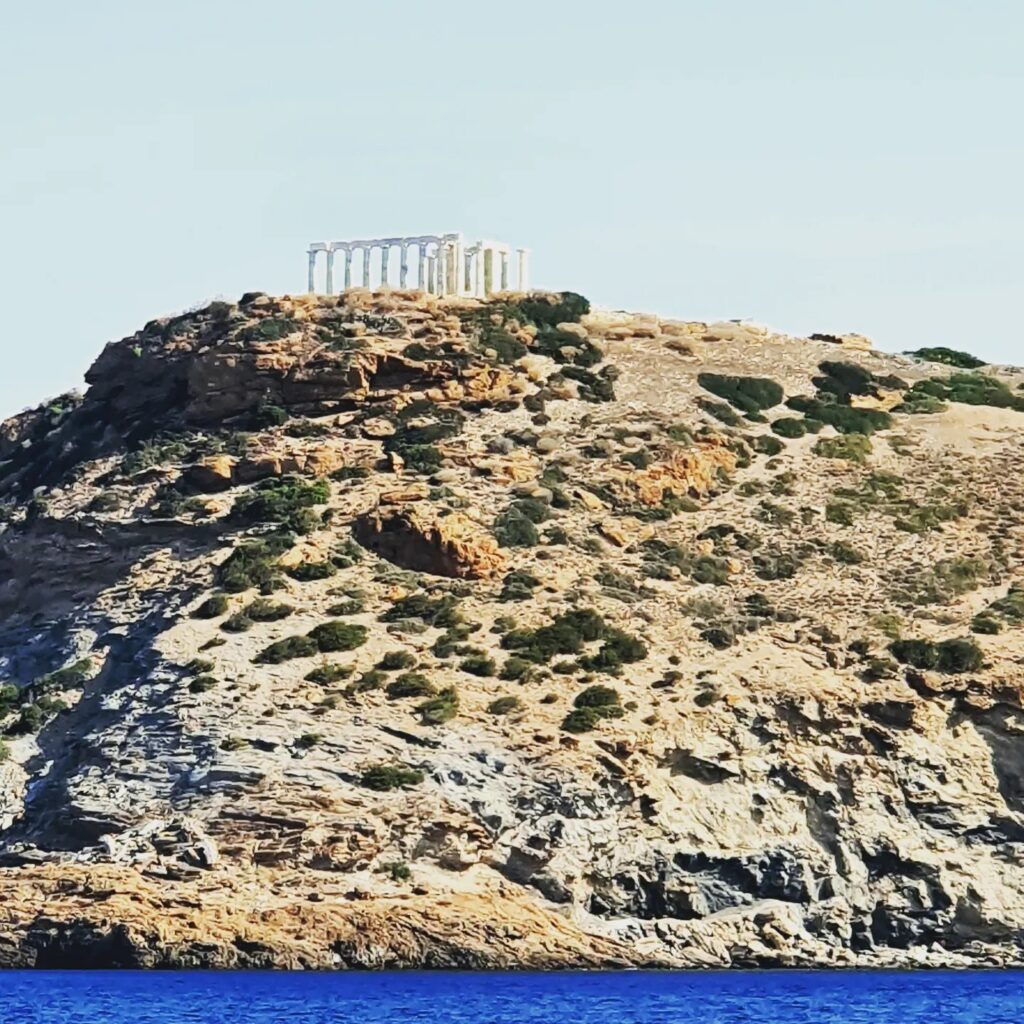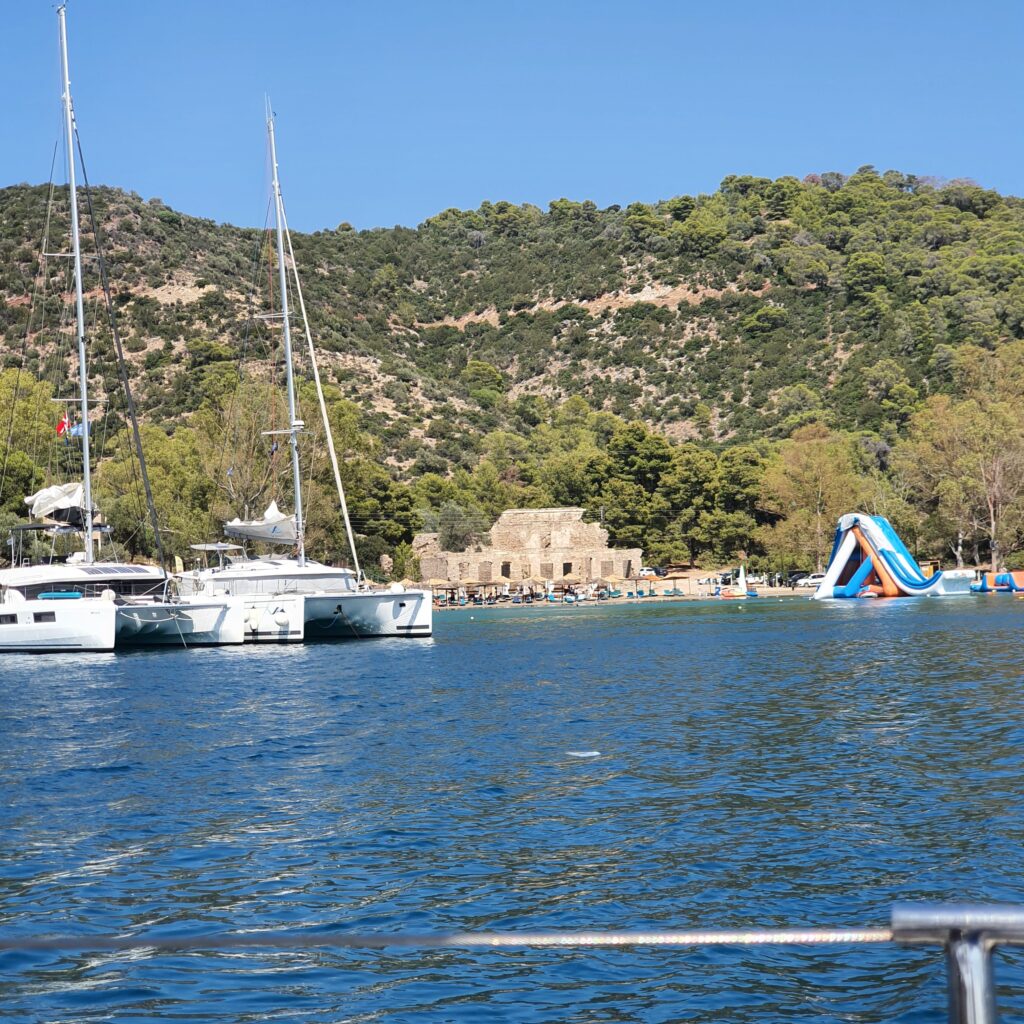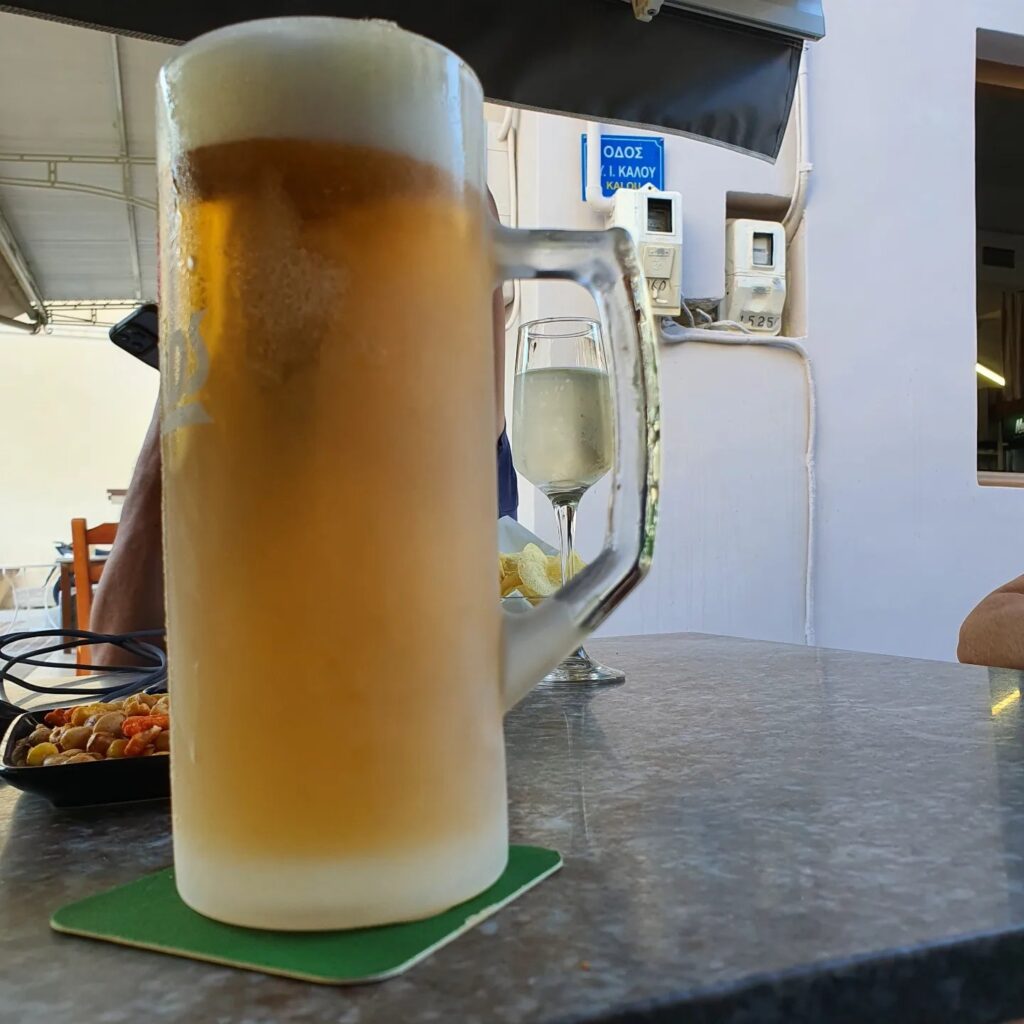With everything prepared and tested, today we finally departed from Lavrion marina towards the beautiful island of Poros.

This leg of the trip is approximately 35 nautical miles. The weather forecast is a bit depressing – very hot and humid with almost no wind.

Cruising along the shore we passed the ancient Temple of Poseidon, which looks rather impressive from the sea.
The Temple of Poseidon is an ancient Greek temple on Cape Sounion, Greece, dedicated to the god Poseidon. There is evidence of the establishment of sanctuaries on the cape from as early as the 11th century BC Sounion’s most prominent temples, the Temple of Athena and the Temple of Poseidon, are however not believed to have been built until about 700 BC, and their kouroi (freestanding Greek statues of young men) date from about one hundred years later. The material and size of the offerings at the Temple of Poseidon indicate that it was likely frequented by members of the elite and the aristocratic class.
The Greeks considered Poseidon to be the “master of the sea”. Given the importance to Athens of trade by sea and the significance of its navy in its creation and survival during the fifth century, Poseidon was of a particular relevance and value to the Athenians.
On approach to Poros we managed to catch some wind and opened the sails for about an hour. That was a nice change to the noise and vibration of the diesel engine.

We also stopped by in Russian Bay for a quick swim. The water is very warm and clean.
With the Treaty of Kuchuk Kainarji, Russia secured free shipping for its navy, war and merchant alike, throughout the waters of the Ottoman Empire. As Russian naval activity grew, need arose for a supply station, and land was acquired at the edge of Poros town. Extensive materiel, coal, and food storage facilities were built, as well as a hardtack baking factory. After Greek independence, Governor Capodistrias requisitioned the facilities for use of the Greek war navy, and offered the Russians an alternative location in a nearby cove. The new facilities were far larger, and were used by Russian ships throughout the 19th century. The number of Russian residents of Poros increased and even a Russian school was established. Then as Russian naval activity declined, so did the base and by the early 20th century only a single Russian watchman was left guarding it. It was then granted to the Greek Navy by the Czar but was never put to actual use, and the abandoned buildings were left to decay. The ruins, in elaborately carved stone, were listed as protected architectural monuments in 1989.

Poros is one of my favorite Greek islands and I always look forward to coming back here. I don’t know why, but it feels like home, even though it doesn’t look like it.
The city pier was surprisingly empty so we easily found a place to stay. Even the mariner said that we are lucky, because yesterday it was packed and will most likely be packed tomorrow.

There was an interesting boat docked next to us. I spoke to the German owner and he shared some history and technical details of the yacht.
It was designed by a South African guy, while he was in a terrible Panama prison for some drug-related charge. He drew the designs using napkins and a pencil. After he was released from prison, he went to Switzerland where the boat was built. After he passed away the boat was bought by the current owner.
The yacht is built from aluminum. It is a catamaran and a half, with half the haul in the middle. Boom-less double mast structure is interesting. And the most amazing thing is that this boat can be disassembled into 5 parts, which can be loaded on a truck and transported over land easily.

Over a light dinner we reviewed and discussed the day, sorted out some team communication issues and made the strategic decision to continue the trip through the Corinth Canal, rather than around the Peloponnese region.
Tomorrow is going to be a long day. We’ll need to cover about 70 nautical miles. Wake up call is for 6am. We should leave before 8am. We’ll see how it goes…
